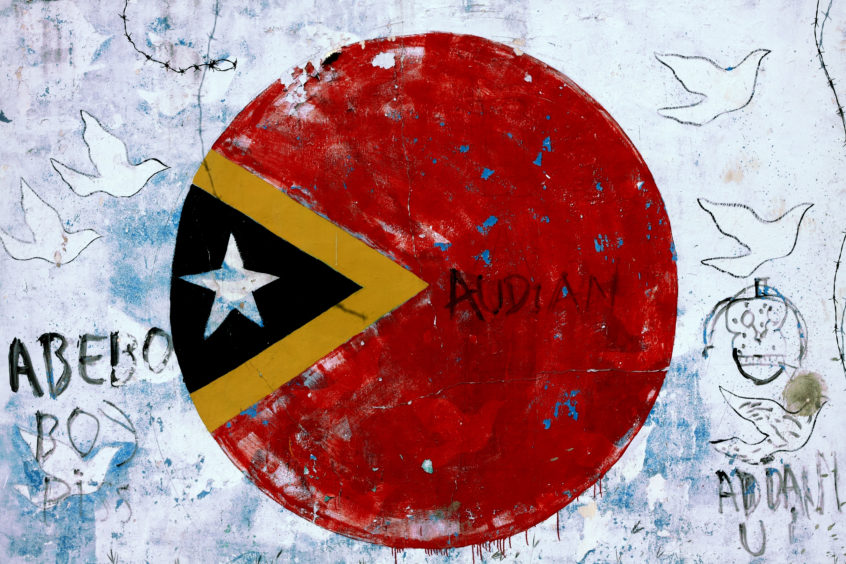
East Timor may have a second chance to see its Greater Sunrise field developed this decade as Australia’s Santos considers extending the life of the country’s Bayu-Undan project, which feeds the Darwin LNG export plant in northern Australia.
The Santos-led joint venture is assessing opportunities to extend Bayu-Undan’s life with a new infill drilling programme. The campaign is being evaluated “to optimize field recovery and extend field life and Darwin LNG production ahead of backfill from the Barossa development,” the company said in its second-quarter financial report.
Revenues from Bayu-Undan have fed a sovereign wealth fund that underpins East Timor’s economy. But with the petroleum money set to dry up by 2022, when the field is expected to cease operations, the country’s leaders have made the development of the 142 billion cubic metre Greater Sunrise gas field a top priority.
However, the development of Greater Sunrise, which straddles Australian and East Timorese maritime borders, has stalled in recent years as East Timor’s government insisted the gas be processed at a yet-to-be built LNG export facility on its shores, rather than at existing plant in Australia. This development option was considered commercially unviable by Woodside Petroleum, which operates the Sunrise project. In fact, last month Woodside said the carrying value of the Sunrise field off East Timor is zero following a US$170 million write down, as the development remains politically stranded.
Woodside has said it may only invest in the upstream section of East Timor’s proposed development plan, leaving the Southeast Asian nation, which holds a 56.56% majority share in Sunrise, to finance a brand-new onshore export plant and pipelines, expected to cost in excess of $10 billion to build.
The hypothetically feasible Timorese development plan, spearheaded by the national oil company’s former chief executive, Francisco Monteiro, remains inherently risky and unlikely to start up before 2030, if ever. A lack of international private investor interest in funding the onshore infrastructure in East Timor raises key questions over whether TimorGAP’s development proposal is commercially and financially viable.
But, shifting political dynamics in East Timor hint at a potential change in direction for the petroleum sector. Under a newly formed government, East Timor’s cabinet last month approved the dismissal of Monteiro from the NOC. Crucially, this could be an opportune time for East Timor to reassess its petroleum development strategy.
Indeed, instead of focusing their efforts on Greater Sunrise, East Timor’s leaders could attempt to work with Santos to find alternative development options for Bayu-Undan, which is still a valuable asset.
Although Bayu-Undan will not have enough gas to support Darwin LNG by itself, if another field such as Barossa, off northern Australia, were to be used as backfill, there is no reason why Santos, which runs the Darwin LNG plant, could not continue operating Bayu-Undan with a reduced output after 2022. However, a new PSC needs to be agreed with the Timorese first. So far, there appears to have been little political will to do this in East Timor. The country’s leadership has instead focused on pursuing its economically dubious development plans for Sunrise.
Nevertheless, Santos appears to be seriously considering an attempt to extend the life of Bayu-Undan after high grading three prospects to be drilled from a list of about 15 identified opportunities. Future gas will be found within mostly shallower zones and distal edges of the field, according to the Adelaide-based company.
Moreover, East Timor could consider offering improved fiscal terms to help entice Santos to invest in further infill drilling.
Significantly, there could also be an opportunity, if the Timorese leadership were prepared to be open minded and proactive, to revive the idea of sending Sunrise gas to the Bayu-Undan project for processing. Developing the Sunrise field via Bayu-Undan, as backfill supply for the Darwin LNG plant instead of Barossa, would be economically superior compared to any other development scenario. As capital investment would be greatly reduced because existing processing and production equipment at Bayu-Undan could be re-used.
For now, Santos has earmarked the technically challenging Barossa field to backfill Darwin LNG. But the company said in March that it would defer a final investment decision (FID) on Barossa following the oil price plunge and coronavirus outbreak, which dented business sentiment.
Barossa’s development is key to Santos as it will help keep the Darwin LNG plant open after Bayu-Undan runs dry in 2022. For now, by attempting to extend the life of Bayu-Undan Santos is buying time to figure out Barossa and get it ready for production.
On the other hand, as Barossa’s FID is delayed, the Timorese could seize the opportunity to quickly develop Sunrise by foregoing their original plan – that has stalled – and making an offer to tie the field into the existing Bayu-Undan production facilities. Of course, stakeholder interests across the Sunrise and Bayu-Undan projects would need to be aligned. But East Timor does have the ability to sell down a portion of its Sunrise equity to the Bayu-Undan joint venture.
Based on this scenario, it is possible to envisage Sunrise starting up by 2024, instead of post-2030, if ever. Although this would require some pragmatic thinking and savvy deal making from East Timor’s leadership. Not to mention, the willingness of Santos, as the operator of Bayu-Undan, and Woodside, as the operator of Sunrise, to collaborate.